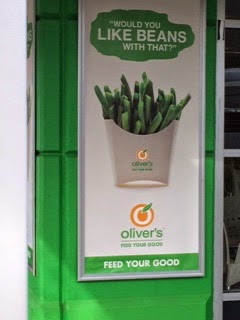So, here some of may take-aways"
Copyright, Fair Use Creative Commons
One of our concerns when putting content online is of course the responsible use of material/content created by other folks. As our amazing Apple educator pointed out to us, it is easy for us to tell students that they should not use other people's materials for their own work, but even better if we model this behavior for them.Consider this for a moment - how many of us go online and find the first image that works for us when we put together a presentation for class? And do we then always have at the bottom of the slide or at the end of the presentation an attribution to the source? One way of modeling to our students responsible use of other folks' content is to show very explicitly where we get our content from, and, possibly even more important, make sure that this content is marked Creative Commons.
 |
| Creative Commons image, Kristina Alexanderson, flickr |
One web site that makes it quite easy to find Creative Commons content is CC Search (http://search.creativecommons.org/). This search engine allows for keyword searches across multiple creative commons areas and for targeting particular kinds of media in this search. Try it out and see if the search results work for you.
Notice then, that each of the items that come up through this search have a Creative Commons license. These come in different levels and give you a sense of what kind of use you can get out of the material. https://creativecommons.org/licenses/ gives you an overview over the options. These options are available to you as well, so if you believe that your content should be out there for other folks to use in some shape or form, get it out there in this kind of way.
Itunes U
You may have gone into itunes U in the past to marvel at the courses and podcast series that are being produced by other universities around the world. Itunes U is a great spot to get a free course or free materials about a subject matter that otherwise may not be that easily available to you. What is the course or subject you are going to pick?What you may not know is that you can also design your very own itunes U course. While it may not be as easily distributed if you cannot connect it with a particular institution (and I am sure it is worth checking out if your institution already has an itunes U presence), you can still send folks an enrollment code. To get started, go to https://www.apple.com/support/itunes-u/course-manager/ as this is the place that gives you an overview what is possible and the starting point to create your own course. While you can just go ahead and click on Creating a New Course, it may make more sense for you to map out what you want your course to be like. Best course of action:
1. Look at the organization of some other itunes U courses. Note that they all have an Overview, Posts, and Assignments. Map out what you want to put into these different chunks.
2. Think of Overview as the Outline, Posts as what you want to say to your students, and Assignments as what you want your students to do.
3. Remember that you can embed into assignments web links (either off a regular web site or from other parts of itunes, including chapters out of books or segments out of other courses), your own materials, links to apps, links to video and audio files.
4. You have to have a square image of yourself that is at least 300x300 pixels and a square image for your course that is at least 600x600 pixels -- so make both of these images a little larger than needed to be on the safe side.
5. You can add up to 4 other designers to your course so that you do not have to do this all alone.






















































